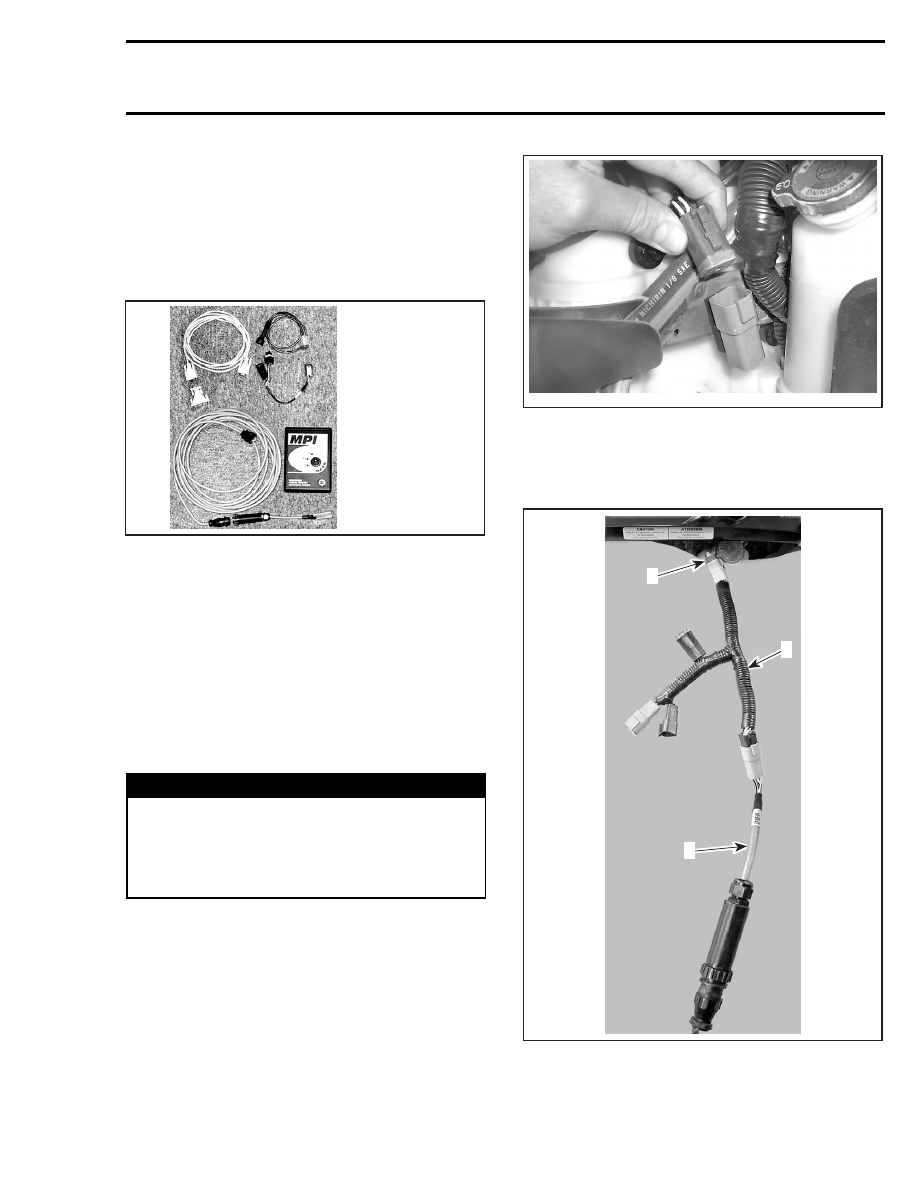Snowmobile Ski Doo REV SERIES (2006 year). Manual - part 54

Section 05 ENGINE MANAGEMENT (POWER TEK)
Subsection 02 (DIAGNOSTIC PROCEDURES)
VCK (VEHICLE COMMUNICATION
KIT)
General
The VCK (Vehicle Communication Kit) (P/N 529
035 981) is the primary tool to diagnose engine
management related problems.
529 035 981
NOTE: The MPEM programmer does not work on
Power TEK models.
Ensure to use the latest version of B.U.D.S. avail-
able on BOSSWeb.
B.U.D.S. (Bombardier Utility and Diagnostic Soft-
ware) is designed to allow electrical component
inspection, diagnostic options and reset such as
the closed throttle.
For more information pertaining to the use of the
software B.U.D.S., use its help which contains de-
tailed information on its functions.
WARNING
If the computer you are using is connected to
the power outlet, there is a potential risk of
electrocution when working in contact with
water. Be careful not to touch water while
working with the VCK.
VCK Supply
The VCK (MPI box) can use the vehicle power for
its supply. Four AA batteries or an AC/DC power
supply can also be used. Make sure to respect
MPI specification if a power supply is used.
Connecting VCK to Vehicle
Remove the 6 pin connector from the protective
cap on the right side of the vehicle.
A00I0YA
Connect supply harness (P/N 529 035 869), to ve-
hicle 6-pin connector.
Connect the 6 pin diagnostic cable from VCK to
supply harness.
A33E0YA
2
3
1
1. Supply harness
2. Vehicle 6-pin connector
3. VCK cable
mmr2005-106
209